artist interview - evelin kasikov's CYMK stitching
Originally hailing from Estonia's creative capital, Tallinn, Evelin Kasikov is a London-residing crafty artist who uses needle and thread as her main medium. We had a chat to her about her practice, motivations and avant garde design.
Originally hailing from Estonia's creative capital, Tallinn, Evelin Kasikov is a London-residing crafty artist who uses needle and thread as her main medium (and has a mild obsession with CYMK). We had a chat to her about her practice, motivations and avant garde design.
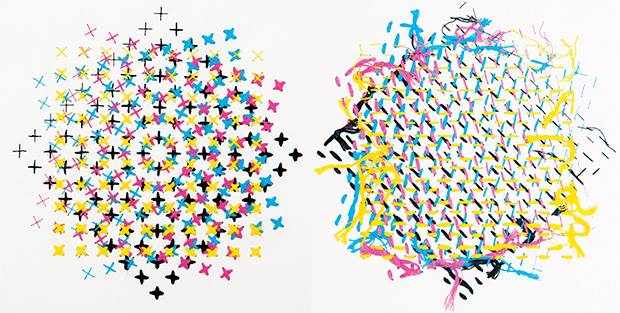
Where were you born and where do you live now?
I was born and raised in Tallinn, Estonia. I moved to London to study at Central Saint Martins and I have lived here almost seven years.
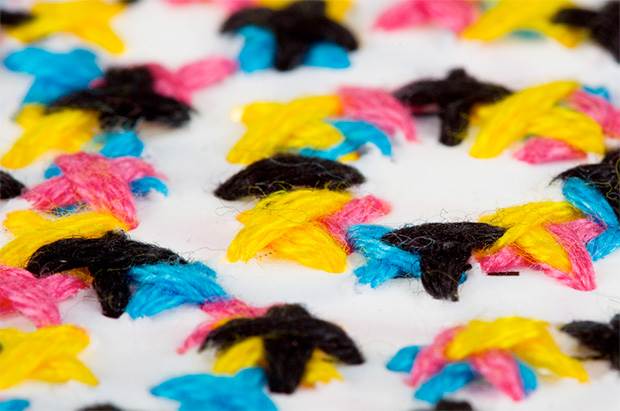
How does where you grew up and where you live now affect your art?
I grew up in a country that is very small, green and not overcrowded. My typically Estonian shy and reserved nature is probably evident in my work – stitching takes a lot of patience! London is a busy, competitive, ambitious and at times a difficult place to be. But, creativity does not thrive on comfort; being in this kind of challenging environment is what keeps the work fresh.
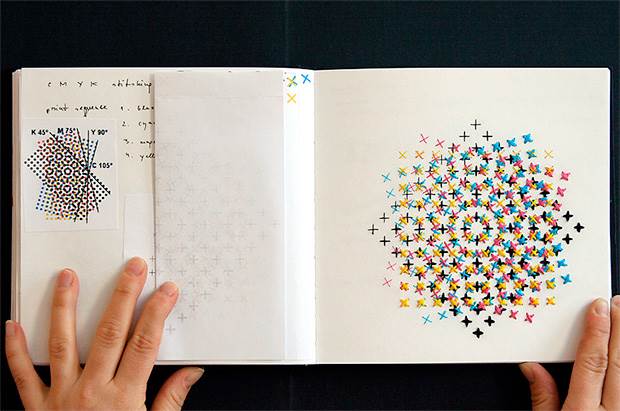
Please describe the space where you do most of your creating – whether it's your art studio or kitchen bench!
You are not too far off: art-studio-slash-kitchen-bench actually describes my work environment quite well. My living and work space is the same. I like everything being clean and ordered around me, so working from home is not difficult. If I had a studio it would probably look the same.

What kind of mediums do you use? Why do you choose to use these mediums?
I work with thread and paper. I started experimenting with the idea of craft in design context when I started my MA in 2006. I didn't deliberately choose to work with embroidery – I just started to experiment with different ideas, and having spent much of my time in front of a screen, I really wanted to create more tactile and 'material' work.
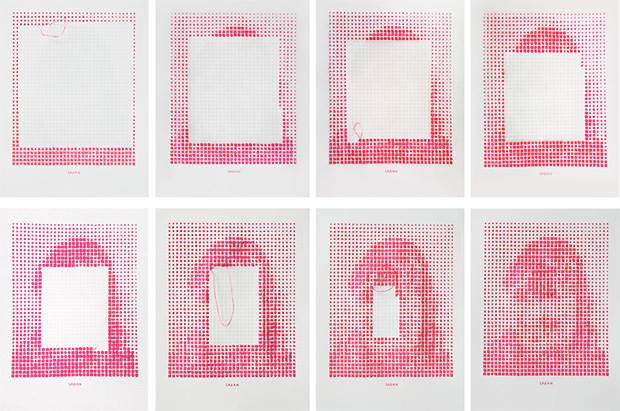
Who first taught you how to use a needle and thread?
I learned to knit, stitch and crochet from my grandmother when I was quite young. Estonia has very strong craft traditions and these skills are nothing unusual.
What are the advantages and disadvantages of using this medium?
When I started experimenting with stitched graphics it seemed like an unexplored area. Also, to create something unique is very satisfying. The one major downside is that the process is slow. It just takes ages to make something by hand.
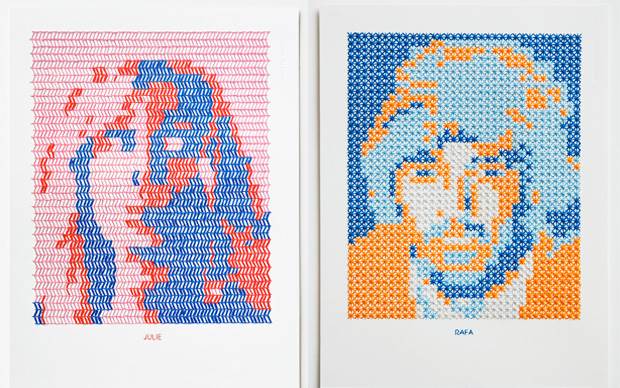
Is there a running theme to the work you create?
In one way or another my work is nearly always connected to typography. I am a graphic designer by trade and I work as a book designer. My stitching work is entirely based on my graphics background.
What kinds of ideas and things are you working on at the moment?
I have long wanted to create large-scale typographic work, and luckily there is an installation project coming up where I can do just that. I'm also working on a personal project: a massive handmade book about colour. I'm curious to see what kind of colours are possible to achieve in my CMYK embroidery, and I also want to experiment with the form of a book.

Graphic design vs art: where does the middle ground lie?
A lot of work these days, including mine, is a hybrid and fits into both categories. I don't feel the need to label this crossover area. If in the strictest sense design is functional and art conceptual, then the area between the two can produce the most intriguing results. I strongly believe in the value of experimental work, although it is often labeled as design-for-design's sake. If a piece of design has no ecological or economical context, it does not mean that there is no context at all. If it creates an experience, breaks the boundaries, changes the way we think of certain things or see the world around us, then there is value in that. If the purpose of design is to communicate a message, then experimental design does that too.
What is the strangest thing or thought that has inspired a piece of work?
It does not happen often, but inspiration can come from frustration. My work gets quite mixed responses. It is sometimes seen as pretty, crafty and feminine, which makes me at first sad, but then it makes me create new work!
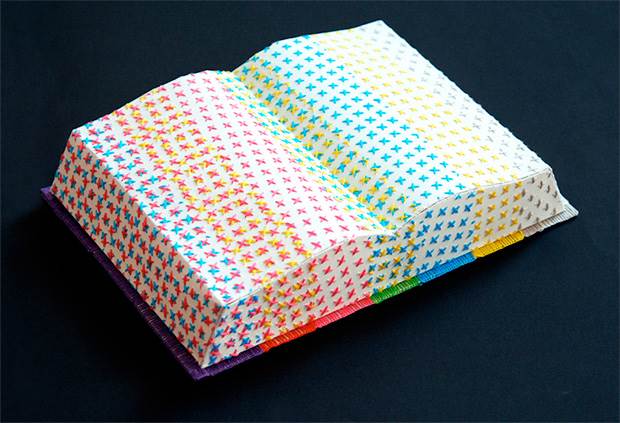
Which era of art do you appreciate the most?
Early 20th Century avant garde and Constructivism (like Malevich, Rodchenko) and Modernist movements in design and architecture (like Bauhaus and De Stijl).
What other budding artists do you love?
My absolute favourites are people whose work is experimental and who have interesting approaches to book design and typography: Hansje van Halem, Côme de Bouchony, Sasha Prood, Maria Fisher to name just a few.

What do you enjoy doing when not creating art?
I love traveling. Whenever possible I'm off for a city break to some place new. Every now and then I also get the opportunity to spend some time with my family in Tallinn. We have a house close to the sea, and this is my favourite place to relax.
Where can we see more of your work?
evelinkasikov.com

